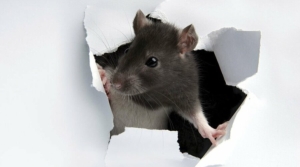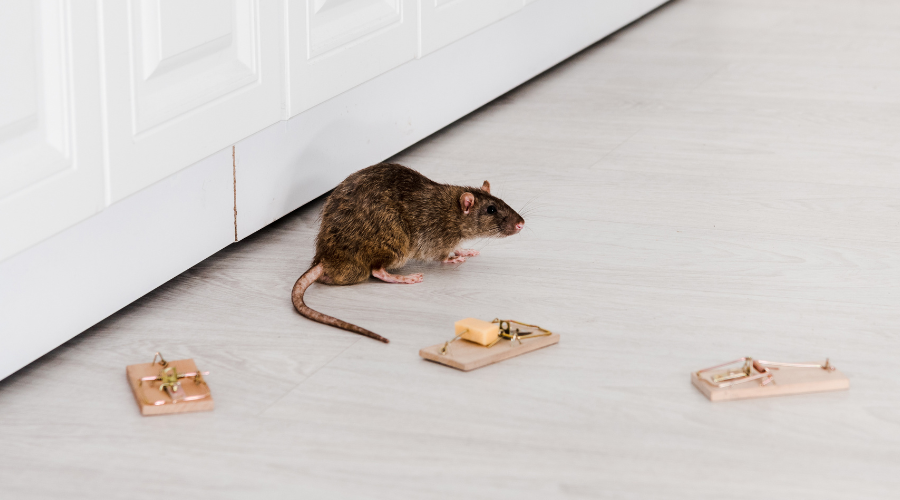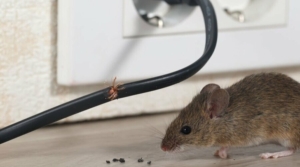How to Control Rodents
Identifying and Safely Controlling Mice, Rats, and Squirrels
Dealing with a rodent infestation in your home can be frustrating and concerning.
Rodents like mice, rats, and squirrels can cause damage to your property, business, and possessions, contaminate food, and spread diseases. While getting rid of them for good requires diligence and patience, there are many effective control methods available.
In this guide, we’ll discuss how to identify signs of an infestation, the risks involved, and proven techniques for safely eliminating rodents from your home.
What Are Rodents and Why Are They a Problem?
Rodents are small mammals distinguished by their continuously growing incisor teeth. The three most common rodent pests in homes are:
- Mice – House mice have slender bodies around 2-3 inches long and weigh about 1/2 ounce. They can squeeze through holes as small as a dime.
- Rats – Rats have sturdy bodies around 7-9 inches long and can weigh over 1 pound. They require holes the size of a quarter to enter a home.
- Squirrels – Tree squirrels have bushy tails and are about the size of rats. They may enter attics.
Rodents pose several risks that make controlling them essential:
- Property damage – Rodents gnaw constantly to wear down their teeth. This can destroy insulation, wires, wood structures, and contaminate food with droppings.
- Disease transmission – Rodents can spread over 35 diseases through contact or contamination. These include salmonella, and hantavirus.
- Safety hazards – Rodent burrows and nests can undermine foundations and cause fires by chewing electrical wires. Their presence can also attract secondary pests like snakes or spiders.
Identifying signs of rodents quickly and taking action to remove them is key to protecting your home.
Inspecting for Signs of Rodents
Carefully checking areas rodents are likely to inhabit and looking for signs of their presence is step one. Common things to look for include:
- Droppings – Dark pellet-like feces, about the size of a grain of rice for mice and kidney bean for rats.
- Rub marks – Trails of grease marks along rafters from rodent fur.
- Tracks – Footprints drag marks into dust.
- Odors – A musky urine smell coming from dens.
- Gnaw marks – Teeth marks on materials like wood, wires, and pipes
- Burrows – Holes dug into soil outside or under structures.
- Nesting material – Shredded paper, fabric, or insulation for building nests.
- Noises – High-pitched squeaking, gnawing, or scampering sounds, especially at night.
Pay special attention to attics, basements, garages, kitchens, and around the exterior of the home. Seeing any combination of these signs likely means a rodent infestation is present and should be addressed.
Identifying the Type of Rodents
Figuring out which specific rodents have moved in is helpful for choosing the best removal methods. Here are details on how to identify common rodent species:
Mice
- House Mouse – Small and grayish brown, with large ears and eyes. Build nests from shredded paper or fabrics.
- Deer Mouse – Light brown coat with white underside and feet. May transmit hantavirus.
Rats
- Roof Rat – Agile climbers with long tails. Nest high up in trees and elevated spots.
- Norway Rat – Burrow below ground. Stocky build with shorter tails and small ears.
Squirrels
- Eastern Gray Squirrel – Large bushy tail with mixed black and gray fur.
- Southern Flying Squirrel – Smaller with a flatter tail. Capable of gliding flights.
- Fox Squirrel – Rusty reddish fur on the back with a cream-colored belly.
Knowing the type of rodent helps decide if baits or exclusion tactics will be most effective. Keep reading for control methods specific to each kind of rodent.
Rodent Control Methods and Products
A combination of methods is best for kicking rodents out and keeping them from returning. Here are common control options and how they work:
Rodent Traps
Traps that use bait or mechanical snaps to catch rodents are very effective control tools. Types include:
- Snap Traps – Traditional spring-loaded that kill mice and rats instantly. Place them rafters.
- Live Cage – Humane traps that capture pests alive for release. Good for squirrels and young rats.
- Glue Boards – Boards coated with non-drying adhesive to ensnare rodents. Position under cabinets.
- Electronic Traps – Battery-powered that deliver a lethal shock. May not be pet or child safe.
Trapping is most useful for light infestations because it needs to be checked and reset frequently.
Rodenticides
Chemical poisons that kill rodents are called rodenticides. They come as solid baits, gels, pellets, or liquid concentrates:
- Anticoagulants – Prevent blood clotting causing rodents to die from internal bleeding. Death can take several days.
- Non-anticoagulants – Disrupt the nervous system, dehydrate, or cause kidney failure resulting in a faster death.
Using multiple small bait stations reduces the risk of rodents storing and avoiding the poison. Be extremely cautious when using rodenticides if you have children, pets, or any animals.
Rodent Baits
Baits contain food substances that attract rodents to traps or contain poisons. Look for baits with enticing ingredients like:
- Hazelnut spread
- Bacon grease
- Cereal grains
- Cheese
Avoid poisons with loose pellets that resemble food if pets or kids are present. Place baits along walls and known rodent runways.
Ultrasonic Repellents
Devices that give off high frequency sound waves are marketed to frighten rodents away. However, their effectiveness is questionable since rodent hearing range is likely above the frequencies produced. Save your money on these devices.
Exclusion
Blocking off any indoor entry points and food sources can keep new rodents from getting in.
- Seal holes wider than 1/4 inch with steel wool, caulk, lath screen, or copper scrub pads.
- Install weather stripping under doors and door sweeps to cover gaps.
- Keep outside areas next to foundations clean. Prune back vegetation touching the home.
- Store pet and human food in sealed metal, glass, or plastic containers to deny access.
- Remove potential nesting sites like piles of debris, old furniture, or abandoned vehicles.
For serious infestations, you may need professional pest control to fully inspect and rodent proof your home. Having a tight home with no access to water and shelter is key to long term prevention.
Rodent-Borne Diseases
Rodents can directly or indirectly transmit a variety of harmful pathogens. Taking precautions around rodent infestations protects you and your family from potential sickness:
- Hantavirus – Deer mice feces can contain this severe respiratory disease. Avoid sweeping and vacuuming droppings.
- Rat-bite Fever – Bacteria from rat or mouse bites leads to fever, rash, and joint pain in humans.
- Leptospirosis – A bacteria in urine can enter the body through mucous membranes, eyes, or broken skin.
- Salmonellosis – Rodent droppings contaminate surfaces and can cause intestinal infection when ingested.
- Plague – Fleas from rodents spread the notorious bacterial disease through bites.
- Lyme Disease – Mice are an alternate host for disease carrying ticks.
Always wear gloves and a face mask when cleaning rodent infested areas. Disinfect any surface that may be contaminated. Proper control measures will also minimize disease risks.
Tips for Preventing Rodent Infestations
Prevention is the best long term solution for keeping rodents out of your home. Try these proactive measures:
Outdoors
- Regularly clean up fallen fruit/nuts from trees and spilled food.
- Keep compost bins away from the home. Avoid adding meat scraps.
- Stack firewood at least 12 inches off the ground.
- Replace damaged vent screens, weather seals, and flashing.
- Use 1/4 inch hardware cloth to exclude rodents from garden plots.
- Clear brush and leaf litter within 100 feet of the home.
Indoors
- Seal cracks wider than 1/4 inch around the home’s exterior and foundation.
- Install door sweeps and weather stripping if gaps are visible underneath doors.
- Store pet and human food in chew-proof containers.
- Clean up crumbs and spills immediately after cooking or eating.
- Fix leaky plumbing and drains to deny rodents water.
- Place traps or monitors in attics, crawl spaces, and unused areas to detect rodents early.
With vigilance and persistence, you can reclaim your home from destructive and unhealthy rodents. If infestations persist, don’t hesitate to contact a professional pest control service for added expertise and treatment products. Investing time into prevention and permanent exclusion is your best defense for avoiding recurring rodent problems in the future.
Conclusion
Rodents can be persistent and tricky pests once established indoors.
But through careful inspection, identification, and integrated use of traps, exclusion, and prevention, you can successfully evict mice, rats, and squirrels from your home for good. When performed properly, do-it-yourself rodent control can be done safely with minimal investment.
Just be cautious when dealing with droppings, nests, and the rodents themselves to avoid potential illness. With the right tools and techniques, you’ll reclaim a pest free home.



